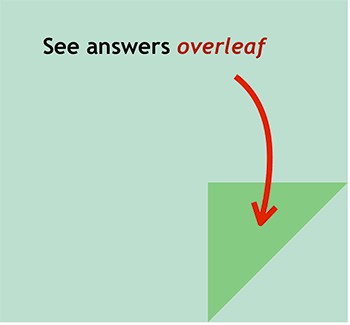Textual Reference Terms

Referential words like above/below, preceding/following and overleaf describe location within a document and offer guidance for the reader. These words have no real meaning within the text, but indicate to the reader other parts of the text. Some words (above, following) are often used in informal and formal texts. Other words (aforementioned, hereinafter) are used mainly in very formal texts, for example legal documents.
Basic Textual Reference Terms
Here are some basic textual reference terms that we use in all kinds of documents. The left-hand column refers to things mentioned earlier in the text or further up on the same page. The right-hand column refers to things mentioned further down on the same page or later in the text.
| ↖ | ↘ |
|---|---|
| above | below |
| preceding | following |
| previous | next |
| overleaf | |
| continued cont'd PTO (BrE) |
Below are the dictionary definitions of the basic words above, with examples:
above: mentioned earlier or further up on the same page
- the two incidents described above
- at the above address
- as I was writing the above, I began to reconsider
below: mentioned further down on the same page, or further on in the text
- our house is pictured below right
- at the below address [American English]
preceding: what precedes or comes earlier
- in the preceding chapters we looked at human evolution
following: what follows or comes next; about to be mentioned
- the following are both grammatically correct sentences
- you are required to provide us with the following information
previous: what precedes or comes earlier
- as we learned in the previous section
next: what comes after the current words or passage
- in the next chapter we will discuss its history
overleaf: on the other side of the page or sheet
- the answers are printed overleaf
continued/cont'd: the text continues. We write continued at the foot of a page to show that the text carries on, usually though not necessarily on the next page or screen.
PTO: abbreviation for Please Turn Over [British English]. We write PTO at the foot of a page to show that the text continues on the other side.
Illustrated Examples of Textual References
The following diagrams illustrate the use of the above words, and are accompanied by examples in context.
above / below

- The above prices are subject to change.
- The two cases described above happened last year.
- See above left for details.
- The apartments below are available now.
- The below apartments (AmE) are available.
- The hotel is pictured below left.
preceding / following

- The preceding section was hardly conclusive.
- The preceding cases have been settled but the following ones are still in court.
- Do you agree to the following rules?
- The examples that follow are based on historical evidence.

- In the following chapters we shall see how Henry VIII resolved his marital problems.
- We will explore dinosaurs in the pages that follow.
previous / next

- Please refer to the previous chapter for details.
- As we saw in previous pages...
- On the next page you can see...
- In the next example...
overleaf

- A price list is printed overleaf.
- Please see overleaf for more details.
- These apartments are available at the rates shown overleaf.
continued

The word continued, or the abbreviation cont'd, may be written at the end of a text to indicate that the text carries on, usually on the next page.
PTO

opposite
Another word that describes location on a page is opposite, meaning "on the other side from the current location". Look at the illustration and example sentences. This word must be used with care in digital documents such as websites and ebooks. What is "opposite" on a large screen could well be "below" on a smaller screen.

- Please refer to the photo opposite.
- The table on the page opposite lists our hotels.
Page positions
In general, we can refer to the corners and sides of a paper page (and sometimes a digital page) with:
- top, bottom, centre
We can combine these words to make very specific locations, for example top left or bottom right. The illustration below shows nine common reference points on a page.
